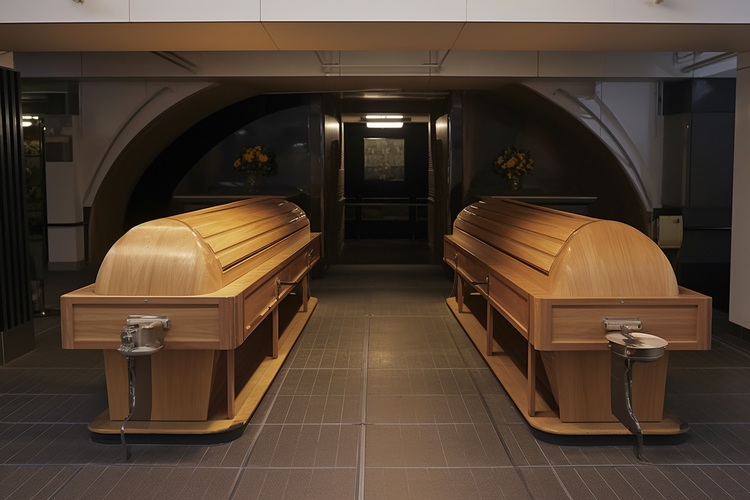2025 UK Cremation Process Overview: Identification, Authorization, and Ashes Handling Detailed
Contemporary UK cremation practices combine legal safeguards with modern identification methods to ensure dignity and accuracy. This guide explains the 2025 process—from identity checks and legal authorizations to secure handling and return of cremated remains—offering clarity during a difficult time.

Identification and Authorization Procedures Before Cremation
In the United Kingdom, strict protocols must be followed before a cremation may take place, ensuring the deceased’s identity is accurately confirmed and all legal permissions are obtained. A family member or someone well-acquainted with the deceased must positively verify their identity, creating a permanent paper trail. This crucial step helps avoid mistakes and preserves dignity.
Following identification, authorization must be granted by the legally responsible individual, usually the next of kin. This involves signing an official cremation authorization form, which not only permits the cremation but also provides key information, such as details of any medical implants. UK regulations require removal of devices like pacemakers ahead of cremation due to safety concerns caused by high temperatures.
To further ensure legal compliance, a medical referee must issue a certificate authorizing the cremation. This secondary medical assessment helps maintain high standards of accuracy and adherence to the law.
Secure Preparation and Chain-of-Custody Monitoring
Once authorization is granted, the body is usually transported in GPS-monitored vehicles to ensure transparency regarding timing and location throughout the process. From arrival, both digital and physical records are generated, often using unique tags, wristbands, or QR-coded systems attached to the deceased. This chain-of-custody tracking follows every step—from entry at the crematorium, body preparation, to the completion of cremation—ensuring full accountability and preventing errors.
Any medical implants or hazardous materials are carefully removed prior to cremation. The deceased is dressed as requested, with personal belongings such as jewelry generally returned to the family unless otherwise noted. The body is placed into a compliant combustible coffin that meets all crematorium requirements.
A mandatory waiting period—typically between 24 and 48 hours—is observed. During this interval, all relevant paperwork, including death certificates and cremation permits, is thoroughly reviewed and finalized in strict accordance with current regulations, encompassing the updated Cremation (England and Wales) Regulations effective from September 2024.
The Cremation Process Explained
Cremation is conducted inside a specialized, high-heat furnace known as a cremation chamber or retort. With temperatures ranging from 760°C to 980°C, the process usually takes between 1 and 3 hours depending on the individual’s body size and the equipment used. UK crematoria handle only one coffin at a time, ensuring no commingling of remains.
After cremation, the chamber undergoes meticulous cleaning to uphold hygiene and respect. Metal components like surgical implants or dental hardware are not incinerated but recovered afterward through magnetic or manual sorting methods. Some crematoriums participate in metal recycling initiatives donating proceeds to charity—but this is always done with family permission.
Respectful and Transparent Handling and Return of Ashes
The cremated remains—commonly referred to as ashes—are bone fragments that are ground mechanically in a cremulator to a fine, sand-like grain. Adult ashes typically weigh between 1 and 3 kilograms; however, the exact amount varies based on several physical factors.
These remains are then placed in a container, either a temporary urn or a vessel provided by the family, and securely sealed. Each container bears unique identification codes to ensure accurate handling and tracking until final delivery.
Families can collect ashes directly from the crematorium or opt for professional delivery services. Some crematoriums also offer simple ceremonies at the handover, providing an opportunity for families to find meaningful closure.
Enhanced Identification Technologies in UK Crematoria
To further reinforce identity confirmation, some UK cremation providers employ sophisticated tracking technologies. For instance, uniquely numbered ceramic memorial discs that endure the cremation process are sometimes placed inside or atop the coffin and accompany the ashes back to families as an additional identity safeguard. Every step—from scanning the coffin at acceptance, during placement in the cremation chamber, to ash processing—is digitally recorded, creating full traceability.
Legal Updates Affecting England and Wales in 2025
The Cremation (England and Wales) Regulations were revised as of September 2024. These updates streamline forms and authorization steps for cremations depending on the death and cremation location. The changes aim to improve consistency and ensure full legal compliance for all cremations performed in England and Wales in 2025. Both families and service providers must adhere to the new guidance to confirm that all paperwork is correctly completed and authorized before proceeding.
Summary
The UK’s contemporary cremation system is rigorously regulated and transparent, blending scientific accuracy with profound respect for both the deceased and their relatives. At every stage—from identification and authorization to the secure return of ashes—strict procedures are followed to safeguard dignity, avoid mistakes, and offer reassurance. Understanding this thorough process can help families feel more prepared and comforted during emotionally challenging times in 2025.
Sources
- UK Government. “Cremations taking place in England and Wales: forms and guidance.” Gov.uk.
- Pure Cremation. “How do I know these are my mum’s ashes?” Purecremation.co.uk.
- Vivid Leaves. “Understanding the cremation process: step-by-step overview.”
Disclaimer: Cremation procedures, forms, and authorization processes can vary by region and crematorium. Pricing and service availability also differ across the United Kingdom. Readers are advised to consult local authorities or funeral professionals for the most current and specific information.




